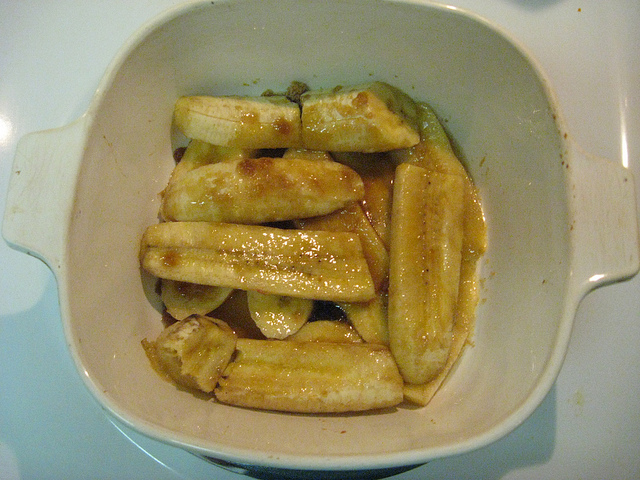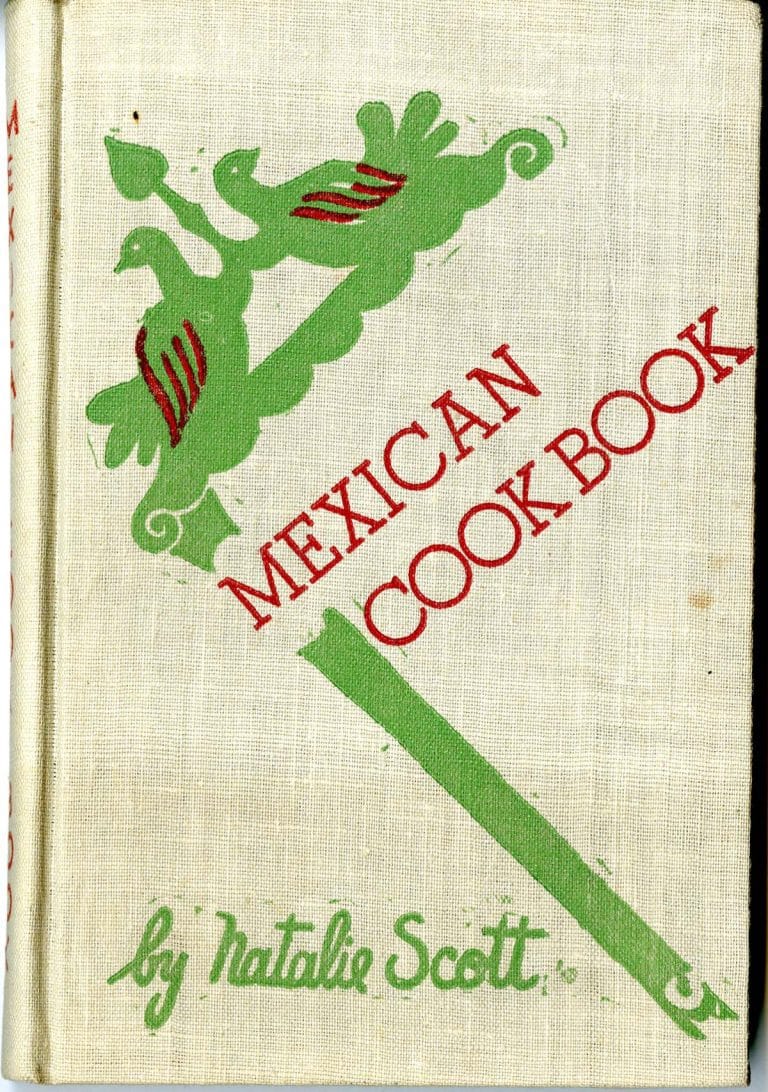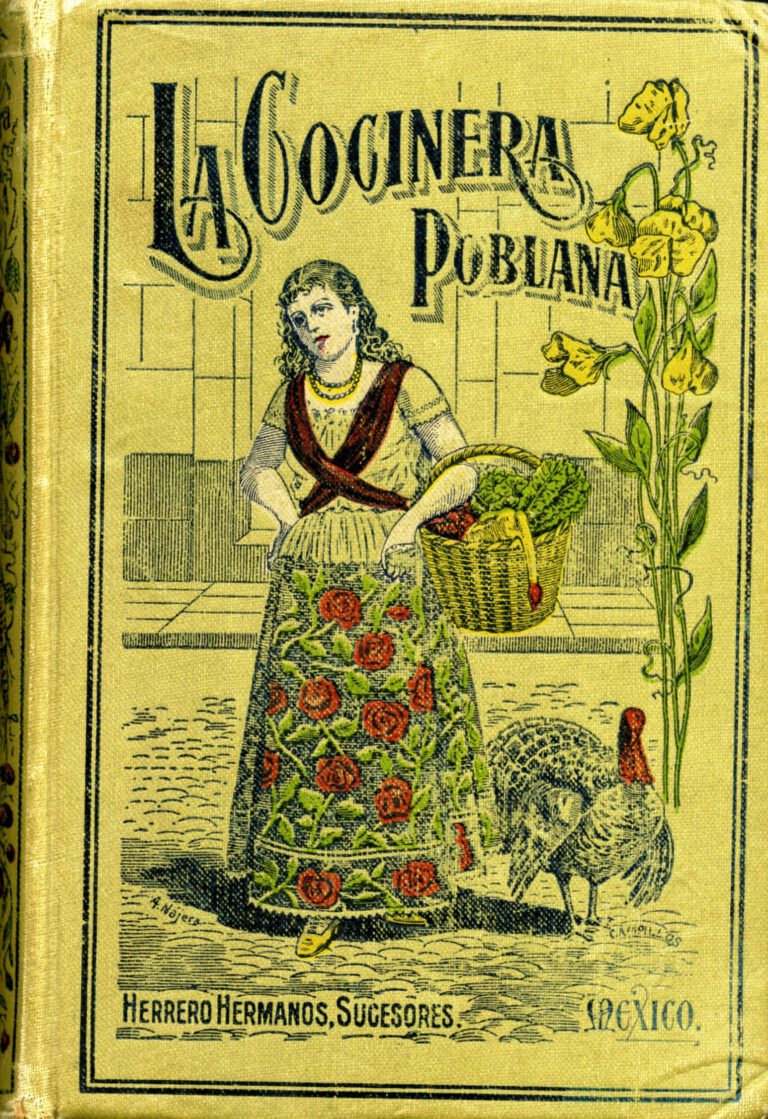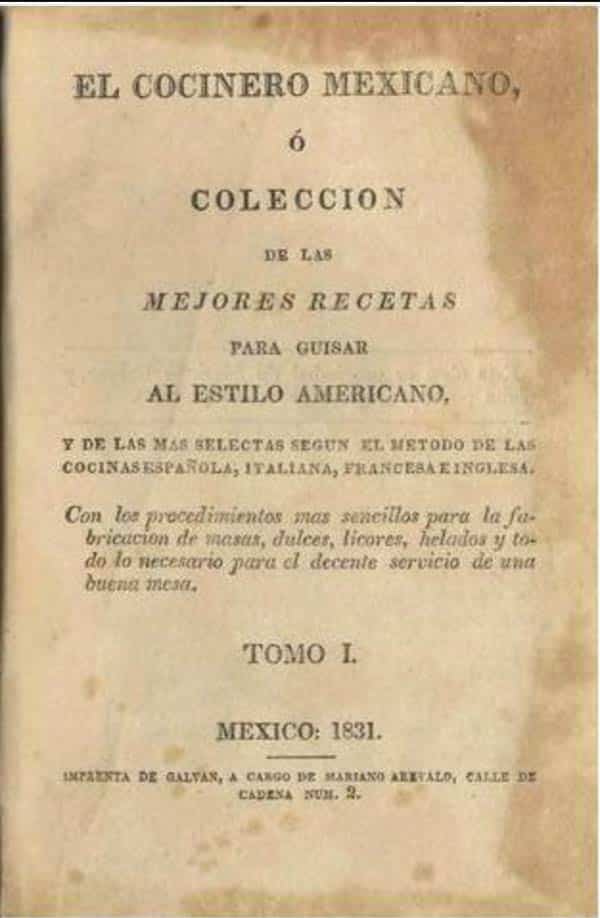Mostachones and Punche de Leche 1884 (Macaroons and Milk Punch)
Perez, Guadalupe. Libro de Recetas de Cocina [Manuscript Cookbooks]. Acatzinco, Puebla: 1884. TX716 .M4 P4759 1884. Mexican Cookbook Collection. UTSA Libraries Special Collections. [Digital Surrogate]

Libra de Recetas de Cocina originated in Acatzingo (or as the author Guadalupe Perez writes it, Acatzinco), a town in Puebla famous for its desserts. Appropriately enough, this notebook contains a multitude of recipes for cakes, candy, ices, and other sweet things. Two recipes that particularly caught my eye were Mostachones (macaroons) and Punche de Leche (Milk Punch), reproduced below. This book is available digitized at the UTSA Special Collections Library website.
Like many writers of manuscript cookbooks, Guadalupe Perez frequently used non-standard spellings. For example, in the macaroon recipe below, she writes “sinco” for “cinco” (five), “arina” for “harina”(flour), and “orno” for “horno”(oven). Variant spellings like these, along with the common use of abbreviated instructions, the difficulty of reading handwriting, and occasional tears or scratched-out text, add an extra level of difficulty to the challenge of transcribing and interpreting historical recipes.
Mostachones (00014)
En un cazo sinco yemas y sinco huevos enteros se baten con una cuchara y asi que espese se le echa una libra de azucar y treinta claras de huevos [se?] le echa una libra y cuatro onzas de arina se baten biene [p?]ara que se incorpore y se deja reposar dos ó tres horas [h?]asen bolitas humedes in dos las manos se [enbuel] [?]n en papeles y se meten al orno templadoe.
Macaroons (00014)
Beat 5 egg yolks with 5 whole eggs until fluffy. Separately, beat 30 egg whites with 1 pound sugar.[1] Fold the egg white mixture into the egg yolk mixture. Add 1 1/4 pounds flour and mix well. Allow to rest for 2-3 hours. Form moist balls with both hands. Place on paper [2] and bake in a moderate oven (~325-350*F)
[1] It isn’t entirely clear in the original syntax whether the 30 egg whites should be added to the already-beaten egg mixture at the same time as the sugar, or if the egg whites and sugar should first be beaten together on their own. I suspect that the latter would produce airier, more macaroon-like results.
[2] I assume that papeles in this context probably refers to parchment paper for baking.
Punche de leche (00036)
Se ponen siete cuartillos de leche y se deja que de un [—–] luego se endulsa al gusto y se le echa media libra de almendra no muy remolida se le echa unas rajas de canela un muñequeta de vainilla y un poquito de limon se pone á la lumbre á que de un hervor fuerte se aparta y se echa en una oya limpia.
Milk Punch (00036)
Allow seven quarts of milk to [—] [1]. Sweeten to taste and add half a pound of almonds (not ground too finely). Also, add some cinnamon sticks, a vanilla bean, and a little lemon. Place on the fire and bring to a full boil. Remove and pour into a clean pan.
[1] I was unable to decipher a key word in this sentence. It looks like “elbov” or “ilbor.” Check the original document to see if you can determine what it might be. Brainstorming things that milk could be “left” to do, I could only think of milk being left to sour or (if unpasteurized) to separate. Neither seems particularly likely in the context of this recipe.







Hi Juli, I agree that the sugar should be mixed in with the egg whites and be sure to beat it very well until stiff peaks form before pouring into the egg mixture and then add flour. As for the milk punch, it may mean to let set until a skim forms. When milk is boiled, it forms a skim as it cools. Remove the skim which is easy to do before drinking. Mum